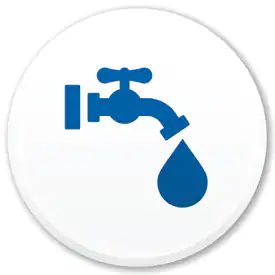Safe Drinking Water Act (SDWA)
The Safe Drinking Water Act (SDWA) ensures the quality of Americans' drinking water. Under SDWA, EPA sets standards for drinking water quality and oversees the states, localities, and water suppliers who implement those standards.

The United States Environmental Protection Agency (US EPA) is authorized under the SDWA to set national health-based standards for drinking water to protect against both naturally-occurring and man-made contaminants. US EPA, states, and water systems then work together to make sure that these standards are met.
Water systems must use EPA-approved analytical methods when analyzing samples to meet federal monitoring requirements or to demonstrate compliance with drinking water regulations. Approved methods are listed in the Code of Federal Regulations Title 40 Parts 141 - 143. Approved methods are developed by EPA, other government agencies, universities, consensus methods organizations, water laboratories, and instrument manufacturers.
Laboratories must be certified by EPA or the State to analyze drinking water samples for compliance monitoring.
Have additional questions? Perhaps we can help.
Click the link to talk with one of our staff. Contact Form
EPA Approved Methods for the Analysis of Multiple Metals in Drinking Water
EPA approved Methods for Anions in Drinking Water
| Anions | Method | Instrumental Technique | Shimadzu Model |
|---|---|---|---|
| Cyanide | Standard Methods 4500 CN | Manual Spectrophotometry | UV-1280 |
| Nitrate | Standard Methods 4500 NO3 | Manual Spectrophotometry | UV-1280 |
| Nitrite | Standard Methods 4500 NO2 | Manual Spectrophotometry | UV-1280 |
| Phosphate | Standard Methods 4500 P | Manual Spectrophotometry | UV-1280 |
| Sulfate | Standard Methods 4500 SO4 | Manual Spectrophotometry | UV-1280 |
EPA Approved Methods for Organics in Drinking Water
| Contaminant Group | Method | Instrumental Technique | Shimadzu Model |
|---|---|---|---|
| Volatiles | EPA 524.2 | Purge & Trap GCMS (original method - no flexibility allowed) |
GCMS-QP2010SE with EST |
| EPA 524.3 | Purge & Trap GCMS (flexibility allowed, SIM allowed, requires sample cooling) |
GCMS-QP2010SE with EST | |
| EPA 524.4 | Purge & Trap GCMS (Nitrogen as purge gas, flexibility allowed, SIM allowed, requires sample cooling) |
GCMS-QP2010SE with EST | |
| 1,4-Dioxane | EPA 522 | Purge & Trap GCMS (Nitrogen as purge gas, flexibility allowed, SIM allowed, requires sample cooling) |
GCMS-QP2010SE with EST |
| Semi volatiles | EPA 525.2 | Liquid-Solid Extraction Direct Injection GCMS | GCMS-QP2010SE or GCMS-QP2020 |
| EPA 525.3 | SPE Direct Injection GCMS (SIM and some flexibility allowed) | GCMS-QP2010SE or GCMS-QP2020 | |
| Organochlorine Pesticides and PCBs | EPA 508 | Liquid-Liquid Extraction Direct Injection GC with ECD | GC-2030 |
| EPA 508A | Liquid-Liquid Extraction Direct Injection GC with ECD | GC-2030 | |
| EPA 508.1 | Liquid-Solid Extraction Direct Injection GC with ECD | GC-2030 | |
| Organophosphorus and organonitrogen pesticides | EPA 507 | Liquid-Liquid Extraction Direct Injection GC with NPD | GC-2030 |
| Triazine pesticides | EPA 536 | HPLCMSMS | LCMS-8050 |
| EPA 523 | Liquid-Solid Extraction GCMS | GCMS-QP2010 SE or Ultra | |
| Chlorinated Acids (Herbicides) | EPA 515.4 | Liquid-Liquid Extraction, Derivatization and GC with ECD | GC-2030 |
| Haloacetic Acids and Dalapon | EPA 552.3 | Liquid-Liquid Extraction, Derivatization and GC with ECD | GC-2030 |
| EPA 557 | Ion Chromatography ESI MSMS | LCMS-8050 | |
| Glyphosate | EPA 547 | Direct Injection HPLC, Post Column Derivatization, and Fluorescence Detection | LC-40 HPLC System |
| Hormones | EPA 539 | SPE HPLCMSMS | LCMS-8050 |
| PFC’s | EPA 537 | SPE HPLCMSMS | LCMS-8050 |
Disinfection by Products Monitoring
| Contaminant of Concern | Method | Shimadzu Instrument |
|---|---|---|
| Total Organic Carbon (TOC) | Standard Methods 5310B | TOC-L |
>> Return to the Environmental Regulatory Compliance web page.


